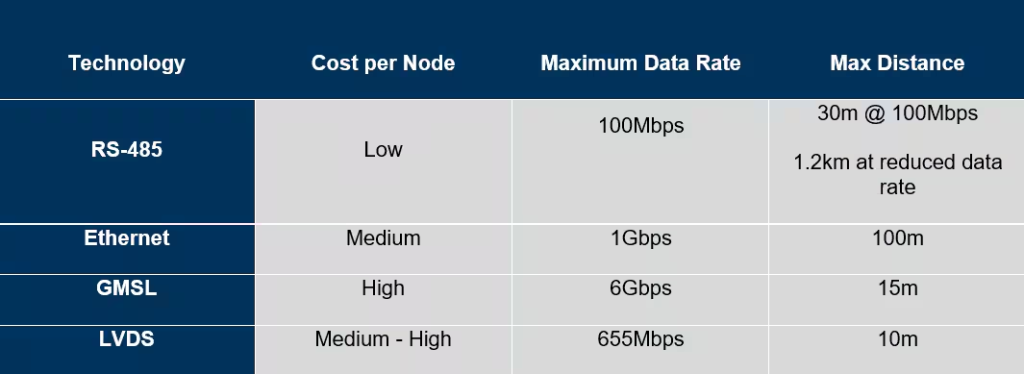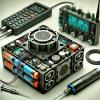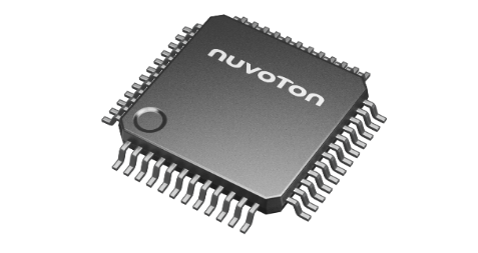Feed aggregator
LED ON - OFF ... A simple circuit
 | submitted by /u/SpecialistRare832 [link] [comments] |
Aspiradora atma con placa controladora quemada
 | submitted by /u/Objective-Concept905 [link] [comments] |
Weekly discussion, complaint, and rant thread
Open to anything, including discussions, complaints, and rants.
Sub rules do not apply, so don't bother reporting incivility, off-topic, or spam.
Reddit-wide rules do apply.
To see the newest posts, sort the comments by "new" (instead of "best" or "top").
[link] [comments]
Logisim: shift register
 | See how to make a simple 4 bits short register on Logisim [link] [comments] |
Cutting-Edge Innovations in Flexible Electronics Transforming Next-Generation Devices
The emergence of flexible electronics is revolutionizing traditional rigid circuitry by enabling stretchable, ultra-thin, and lightweight electronic devices. These advances are transforming key sectors such as wearable technology, biomedical instrumentation, IoT, and next-gen display systems. Rapid breakthroughs in nanomaterials, conductive polymers, and advanced fabrication techniques are accelerating the adoption of flexible electronics across multiple industries.
Advanced Materials Engineering for High-Performance Flexible Electronics Next-Gen Conductive Polymers and Hybrid NanocompositesTraditional silicon-based electronics are constrained by rigidity, necessitating the transition to flexible alternatives. Conductive polymers, such as poly(3,4-ethylenedioxythiophene) (PEDOT) and polyaniline (PANI), offer a balance between mechanical pliability and high electrical conductivity. Hybrid nanocomposites incorporating silver nanowires (AgNWs), graphene, and transition metal dichalcogenides (TMDs) enhance charge transport and mechanical durability.
Quantum Dot-Enhanced Flexible MaterialsQuantum dots (QDs) and perovskite nanocrystals are being explored for their tunable optical and electronic properties, significantly improving the performance of flexible photodetectors, OLED displays, and sensor arrays. Their integration into stretchable substrates facilitates the development of high-resolution rollable screens and energy-efficient lighting solutions.
Liquid Metal Interconnects for Stretchable ElectronicsGallium-based liquid metals provide dynamic electrical pathways with self-healing properties, ensuring resilience under mechanical stress. These interconnects are pivotal in deformable circuits, allowing uninterrupted performance even under extreme bending or stretching conditions.
Cutting-Edge Fabrication Techniques for Flexible Circuits Ultra-Precision Roll-to-Roll (R2R) ManufacturingRoll-to-roll (R2R) processing is a breakthrough in large-scale flexible electronics production, enabling continuous fabrication of stretchable circuits with micron-level precision. This method significantly reduces production costs while maintaining high-throughput scalability for applications such as flexible RFID tags and sensor arrays.
Multi-Material 3D Printing for Integrated ElectronicsRecent advancements in 3D printing have enabled additive manufacturing of complex electronic architectures using conductive, insulating, and dielectric inks. Multi-material 3D printing facilitates the direct integration of flexible electronics into biomedical implants, conformal antennas, and wearable devices.
Disruptive Applications of Flexible Electronics in Next-Gen Technologies Biocompatible Electronic Skins and Neural InterfacesUltra-thin electronic skins (e-skins) with embedded sensors enable seamless real-time health monitoring. These biocompatible devices are crucial for applications such as non-invasive glucose monitoring, prosthetic feedback systems, and brain-machine interfaces (BMIs) for neuroprosthetic applications.
Foldable AMOLED Displays and Holographic ProjectionsLeading display manufacturers are leveraging flexible organic light-emitting diodes (AMOLEDs) to create ultra-thin, foldable, and rollable screens. Future innovations include holographic projection-based flexible displays that enhance augmented reality (AR) and virtual reality (VR) experiences.
Self-Powered IoT Sensors and Sustainable ElectronicsFlexible electronics integrated with energy-harvesting solutions such as triboelectric nanogenerators (TENGs) and biofuel cells are driving self-powered IoT deployments. These technologies significantly enhance smart packaging, environmental sensing, and remote monitoring systems with minimal energy consumption.
Overcoming Challenges in Flexible Electronics DevelopmentDespite remarkable progress, several technical barriers persist:
- Material Optimization: Enhancing the mechanical resilience of stretchable conductors without compromising electronic properties remains a critical challenge.
- Hybrid Integration with Rigid Components: Seamless interfacing between flexible circuits and conventional silicon-based microelectronics demands innovative interconnection techniques.
- Reliability Under Dynamic Deformation: Ensuring long-term stability under cyclic bending, twisting, and stretching is essential for real-world applications.
- Power Management: Next-gen energy storage solutions such as ultrathin supercapacitors and flexible lithium-ion batteries are being explored to meet the power demands of flexible electronic systems.
Flexible electronics is poised to redefine the landscape of consumer electronics, healthcare, and IoT ecosystems. As materials and fabrication techniques continue to evolve, the widespread commercialization of these technologies will drive innovation in wearable computing, adaptive displays, and biocompatible devices. The next decade will witness a convergence of AI, quantum electronics, and flexible circuits, paving the way for unprecedented advancements in intelligent, sustainable, and seamlessly integrated electronic systems.
The post Cutting-Edge Innovations in Flexible Electronics Transforming Next-Generation Devices appeared first on ELE Times.
Breaking Boundaries with Ultrawide Band (UWB) Technology: A Deep Dive into High-Precision Wireless Communication
Introduction: The Evolution of UWB in Wireless Systems
Ultrawide Band (UWB) technology has emerged as a disruptive force in wireless communication, offering ultra-low latency, high data rates, and centimeter-level precision localization. Unlike conventional narrowband and wideband systems, UWB operates over an exceptionally broad spectrum (>500 MHz), enabling unparalleled spatial awareness and secure connectivity. Its applications span IoT, automotive, smart devices, and industrial automation, making it a foundational element in next-generation wireless ecosystems.
The Core Principles of UWB: Wideband Spectrum and Low Power Consumption Wideband Transmission Characteristics and Spectral EfficiencyUWB operates within 3.1 GHz to 10.6 GHz under FCC regulations, leveraging ultra-short pulses (<2 ns) to achieve high time-domain resolution. Unlike frequency-hopping or spread-spectrum techniques in Wi-Fi and Bluetooth, UWB transmits data over a large frequency range, resulting in improved spectral efficiency, reduced interference, and higher penetration through obstacles.
Pulse-Based Modulation: Precision Through Impulse Radio (IR-UWB)UWB employs Impulse Radio (IR-UWB) modulation, encoding data into ultra-short pulses rather than continuous waveforms. This enhances resilience against multipath fading and allows accurate time-of-flight (ToF) calculations for centimeter-level positioning accuracy—critical for localization applications in smart infrastructure and real-time tracking.
Advanced UWB Signal Processing and Protocol Enhancements High-Precision Ranging and Time Synchronization AlgorithmsUWB implements sophisticated ranging techniques such as:
- Two-Way Ranging (TWR): Measures the round-trip time of pulses to determine distance with minimal latency.
- Time Difference of Arrival (TDoA): Enables multi-anchor localization by analyzing phase shifts and signal arrival disparities, refining positioning accuracy for industrial and AR/VR applications.
- Angle of Arrival (AoA): Extracts angular data for robust direction-finding, optimizing navigation for autonomous systems.
- Adaptive Filtering Techniques: UWB dynamically adjusts signal parameters, mitigating cross-talk and interference in dense environments.
- Spread Spectrum & Low Probability of Intercept (LPI): Wideband transmission ensures low-power spectral density, making UWB resilient against eavesdropping and jamming, enhancing cybersecurity for financial transactions and digital key applications.
- Keyless Entry & Secure Vehicle Access: UWB outperforms traditional RFID/NFC by preventing relay attacks, ensuring encrypted authentication.
- Advanced Driver Assistance Systems (ADAS): UWB fusion with LiDAR and radar enhances in-vehicle monitoring, parking automation, and collision avoidance.
- Real-Time Location Systems (RTLS): UWB-enabled asset tracking in warehouses ensures precise inventory management and operational efficiency.
- Wireless Sensor Networks (WSNs): Low-latency UWB communication supports edge AI-powered automation in smart factories and industrial robotics.
- Non-Invasive Monitoring: UWB’s ultra-low power properties enable next-gen biomedical imaging and wireless body area networks (WBANs).
- Contactless Vital Sign Detection: UWB radar systems monitor respiration and heart rate, enhancing telemedicine and elderly care.
Despite its technical superiority, UWB adoption faces hurdles:
- Global Regulatory Compliance: Limited standardization across regions impacts seamless deployment.
- Coexistence with Legacy Wireless Systems: Hybrid UWB-Bluetooth Low Energy (BLE) architectures mitigate compatibility issues in consumer electronics.
- Power Consumption Trade-offs: Ultra-low power UWB chipsets leveraging AI-driven optimizations improve battery life for mobile and IoT applications.
As AI-driven signal processing enhances UWB’s accuracy and efficiency, its role in autonomous navigation, AR/VR interfaces, and smart wearables will grow. With 6G networks integrating UWB for high-precision wireless sensing and localization, the next decade will witness unprecedented advancements in ubiquitous connectivity and spatial intelligence.
Conclusion: UWB as the Backbone of Hyper-Connected SystemsUWB is revolutionizing wireless communication by delivering unmatched precision, security, and energy efficiency. As industries embrace AI-augmented UWB solutions, its applications will extend across smart cities, industrial automation, and immersive digital experiences, shaping the future of intelligent connectivity.
The post Breaking Boundaries with Ultrawide Band (UWB) Technology: A Deep Dive into High-Precision Wireless Communication appeared first on ELE Times.
U heard it that we are flexing micro controllers?
 | Flex in the comments⬇️ [link] [comments] |
RS-485: The Communication Protocol that Keeps on Giving
Courtesy: Analog Devices
When it comes to reliable, long-distance communication protocols, RS-485 has stood the test of time. Industrial automation is one of many industries that still rely on this tried-and-true protocol, despite the rise of modern alternatives such as Ethernet, Gigabit Multimedia Serial Link (GMSL), and low-voltage differential signaling (LVDS).
The new Core Interface blog series will explore industrial automation technology (IAT) such as building automation, process control, instrumentation, fleet management, and more, beginning with a four-post mini-series exploring what exactly has given the RS-485 communication protocol such staying power. First, we’ll showcase key features and benefits of RS-485 in IAT and beyond. Later, we’ll touch on some unique use cases and highlight ADI solutions that leverage RS-485 to add value for our customers.
Applications of RS-485The RS-485 protocol remains a staple in industries that prioritize stability, longevity, and proven performance over cutting-edge technologies. This robust, cost-effective, and established protocol is naturally attractive to industries that are conservative about adopting new standards, such as:
- Industrial Automation: RS-485 is widely used in factory and process automation for connecting programmable logic controllers (PLCs), sensors, and actuators. The long-distance capability and resistance to electrical noise make it ideal for noisy industrial environments.
- Home Automation: RS-485 is also popular in home and building automation, where it connects devices like thermostats, lighting systems, and security controls.
- Motion Control: In environments that require precision control of motors and machinery, RS-485 shines for its reliability and real-time communication capabilities.
The RS-485 standard, also known as TIA/EIA-485, enables robust performance in environments prone to electrical noise over long distances—hence its popularity for industrial and commercial applications. This immunity to noise is one of the protocol’s core strengths, but it offers many advantages besides.
Balanced Differential SignalingRS-485 transmits and receives data using two wires carrying equal but opposite signals. Any external noise typically affects both lines equally as long as the wires are close together with matched impedances.
Balanced differential signaling improves noise immunity by canceling out interference that is common to both lines. The receiving end only reads the difference between the two signals, ignoring any noise. This ensures reliable communication even in electrically noisy environments such as factories where motors and other equipment can often generate electro-magnetic interference.
Full-Duplex and Half-Duplex ModesRS-485 supports both full-duplex and half-duplex communication. In full-duplex, data can be transmitted and received simultaneously, but it requires two pairs of wires. Half-duplex, on the other hand, uses a single pair of wires for both transmission and reception, alternating between the two. This makes RS-485 highly versatile, allowing engineers to choose the best mode for their application’s needs.
Number of Transceivers on the BusStandard RS-485 can support up to 32 transceivers on a single bus (or as high as 256 nodes with modern transceivers). This capability makes it ideal for multi-device communication networks in systems like factory automation or building controls, where several devices need to communicate over a single bus.
Common-Mode RangeAnother vital feature of RS-485 is its wide common-mode range. The system can tolerate a voltage difference of at least -7V to +12V between the grounds of devices on the same bus. This resilience ensures stable communication across devices that may not share a common ground or are subject to differing electrical potentials, which can be common in industrial setups.
Data Rate Vs. Distance Trade-OffStandard RS-485 can support data rates up to 10 Mbps over short distances and slower speeds over longer distances (up to 1.2 km). This makes it suitable for applications that require different combinations of speed and range.
Value: Function Features Vs. CostRS-485 remains a cost-effective choice compared to modern alternatives like Ethernet, GMSL, and LVDS. Although these newer protocols offer higher data rates and more advanced features, RS-485 provides an excellent balance of performance and cost for many industrial applications. Below is a rough comparison of nodes for different technologies. As you can see, while Ethernet, GMSL, and LVDS excel in high-speed data transfer, their higher node costs and shorter transmission ranges limit their suitability for industrial systems with longer-distance, lower-data-rate needs.
Why RS-485 Remains a Strong ChoiceAlthough modern alternatives offer certain advantages, RS-485 remains a key player in many industrial applications due to its balance of reliability, simplicity, and cost-effectiveness. Its wide adoption across industries like automation, building control, and motion systems is a testament to its staying power.
With features like noise immunity, long-distance communication, and support for multiple transceivers, RS-485 provides an excellent solution for environments where stability and robustness are paramount. Pair this with innovative features from Analog Devices, Inc. (ADI)’s portfolio of transceivers that push RS-485 beyond the standard, and you have a robust solution for your connectivity needs.
The post RS-485: The Communication Protocol that Keeps on Giving appeared first on ELE Times.
Infineon CoolGaN power transistors enable SounDigital to reach higher fidelity in smaller amplifier systems
Manufacturers of cutting-edge audio equipment constantly seek to enhance sound quality while also meeting the growing demand for compact, lightweight, more integrated, and energy-efficient designs. At the same time, they must ensure seamless connectivity, cost-effectiveness, and user-friendly functionality, making audio product development more complex than ever. To overcome these challenges, SounDigital has integrated CoolGaN transistors from Infineon Technologies AG into its new 1500 W Class D amplifier, featuring an 800 kHz switching frequency and five channels. Infineon’s advanced GaN technology has improved the energy efficiency of the amplifier by five percent and reduced energy loss by 60 percent.
“We are excited to enhance the performance of our audio amplifiers using Infineon’s GaN power semiconductors, enabling us to inspire people and provide entertainment by amplifying music around the world,” said Juliano Anflor, CEO of SounDigital. “GaN transistors significantly enhances our overall system performance with minimized system cost and increased ease of use.”
“GaN technology is transforming the audio amplifier industry, providing unparalleled efficiency and performance,” said Johannes Schoiswohl, Head of the GaN Business Line at Infineon. “Infineon’s leading GaN solutions deliver superior sound quality, higher power density, and reduced energy consumption, enabling SounDigital’s audio systems to reach new levels of fidelity and performance.”
For its 1500 W Class D amplifier, SounDigital selected Infineon’s 100 V normally-off E- mode transistors: IGC033S101 in a PQFN-3×5 package and IGB110S101 in a PQFN-3×3 package. With their low on-resistance, the transistors are ideal for demanding high-current applications, enabling significant improvements in both sound quality and efficiency of SounDigital’s amplifier. The GaN-based amplifier also delivers high performance while reducing power dissipation by 75 W, allowing for a 50 percent smaller heat sink.
Additionally, the overall system size has been reduced by 40 percent without compromising performance. The audio quality has been further improved by the CoolGaN transistors, with total harmonic distortion (THD) reduced by 70 percent, enabling a more precise and detailed sound experience. At the same time, the idle current has been reduced by 40 percent, significantly improving energy efficiency.
The post Infineon CoolGaN power transistors enable SounDigital to reach higher fidelity in smaller amplifier systems appeared first on ELE Times.
University of Michigan awarded up to $7.5m to bring heat-resistant silicon carbide sensing and computing chips from lab to fab
I might have found the culprit.
 | The Varactor diode in the photo seems to have marks of overheating. I came to this conclusion after observation with a flashlight on the back of the board. I was led to perform this visual inspection because I concluded that a stove's control board 098-01540-35 won't turn on due to a faulty G5Q-14 relay. I'll add more findings down the road of troubleshooting. [link] [comments] |
Делегація представників Програми розвитку Організації Об’єднаних Націй (ПРООН) в КПІ
Наш університет прийняв делегацію представників Програми розвитку Організації Об’єднаних Націй (ПРООН) в Україні.
SounDigital uses Infineon’s 100V normally-off E-mode CoolGaN transistors
First Solar announces final sale amount of 2024 Section 45X Advanced Manufacturing Production tax credits
Фінансово-бюджетний звіт за 2024 рік (МОН)
Геотрон: від студентського гуртка – до спеціалізованого центру
На XIII Міжнародному фестивалі інноваційних проєктів "Sikorsky Challenge 2024: інновації для миру і безпеки України" команда проєкту "Модульна система дистанційного розмінування "Імпактор" стала переможцем у номінації "Краще стартап-рішення". Автори розробки – члени студентського наукового гуртка "Геотрон".
Візит топових компаній з Фінляндії
🇺🇦🇫🇮 Представники топових компаній з Фінляндії під егідою Rebuild Ukraine Office завітали до нашого університету для налагодження співпраці
New chip reveals Microsoft’s quantum computing playbook

We took a step back and said, ‘OK, let’s invent the transistor for the quantum age, said Chetan Nayak, corporate VP of Quantum Hardware at Microsoft. He was talking about the company’s Majorana 1 chip, which marks a notable development in quantum computing. EDN’s sister publication EE Times takes a closer look at this chip’s topological qubit architecture while providing a technical glimpse of competing products: Google’s Willow processor and the University of Science and Technology of China’s Zuchongzhi 3.0 chip.
Read the full story at EE Times.
Related Content
- The Basics Of Quantum Computing
- Exploring the Frontiers of Quantum Computing
- Power supply management in quantum computers
- Hardware security entering quantum computing era
- How Intel Quantum Chips Could Retransform Silicon-Based Computing
The post New chip reveals Microsoft’s quantum computing playbook appeared first on EDN.
Nuvoton Releases Mass Production Launch of New Industrial BM-ICs
Nuvoton Technology Corporation Japan (NTCJ) has developed new industrial 17-cell BM-ICs “KA49701A” and “KA49702A” for 48V batteries. Mass production starts from April 2025. These products enhance the safety of battery systems and simple safe system construction.
Achievements:- By incorporating fault diagnosis and fail-safe functions within the battery monitoring IC(BM-IC), it is possible to build a safe system without external protection circuits. This contributes to improved safety of the Battery Management System (BMS) and reduced system costs.
- Achieves industry-leading voltage measurement accuracy of +/-2.9mV, allowing maximum utilization of battery capacity.
- Reduces current consumption during operation, enabling long battery drive times. Additionally, by reducing current consumption during shutdown, self-discharge is minimized, allowing for long-distance transportation and long-term storage of battery packs.
The expansion of renewable energy adoption and the development and expansion of data centers of generative AI are progressing. Energy storage systems responsible for stable power supply require larger capacity and higher output batteries. Consequently, the shift from traditional lead-acid batteries to smaller, lighter, and higher energy density lithium-ion batteries (LIB) is accelerating. However, LIBs are more expensive than lead-acid batteries and require systems to prevent fires, leading to increased manufacturing costs.
To address this challenge, we have developed a “48V BM-IC for Industrial Equipment ” equipped with fault diagnosis and fail-safe functions, leveraging our automotive battery control technology cultivated over many years. This product achieves both enhanced battery system safety and reduced system cost for LIB-equipped storage systems. Additionally, with an industry-leading voltage measurement accuracy of +/-2.9mV and low power consumption during both operation and shutdown (1/10 of our previous products), it maximizes battery capacity utilization.
Features:- By integrating fault diagnosis functions and fail-safe functions within the BM-IC, it is possible to build a safe system without external protection circuits. This contributes to improved safety of the BMS and reduced system costs.
The battery monitoring IC plays a role in ensuring the system operates safely during anomalies such as overcharging or over-discharging of the battery. However, if the main circuits performing cell voltage measurements such as the AD converter or multiplexer of the BM-IC fail, it needs to ensure system safety with external protection circuits, but this increases board area and system cost. The major internal circuits of this product are equipped with diagnostic functions and fail-safe functions. This diagnostic function can detect main circuit failures and control·the cut-off switch, achieving both enhanced BMS safety and reduced system cost.
2. Achieving industry-leading voltage measurement accuracy of +/-2.9mV allows maximum utilization of battery capacity.
By reducing noise levels on the 16-bit AD converter and incorporating a digital filter, we have achieved industry-leading voltage measurement accuracy of +/-2.9mV. By improving voltage measurement accuracy, maximum Battery capacity can be used. Furthermore, precise voltage measurement has been achieved over a wide temperature range. It is also suitable for applications requiring high voltage measurement accuracy in cold and hot environments, such as stationary battery systems compliant with the Chinese national standard.
3. Reducing current consumption during operation realizes long-term Battery operation. Additionally, by reducing current consumption during shutdown, self-discharge can be minimized, enabling long-distance transportation and long-term storage of battery packs.
By shortening the cell voltage measurement time, which has high power consumption, operating current has been achieved at 260μA, less than 1/10th of our previous standards. This enables long battery drive times. Also, optimization of the circuit design has reduced shutdown current consumption to 0.1μA or less. Using our IC, self-discharge can be minimized, preventing deterioration due to over-discharge when LIBs are transported over long distances and stored long-term.
Applications:
Battery systems (Energy Storage System), backup unit for data centers,
Automated guided robots, electric bicycles, drones, etc.
Product name:
BM-IC for industrial equipment
KA49701A, KA49702A
| Model Number | KA49701A | KA49702A | ||
| Charge/discharge control method | Low-side switch | High-side switch | ||
| Maximum number of connected cells | 17 cells | |||
| Rated voltage | 85V | |||
| Voltage Measurement Accuracy | +/- 2.9mV | |||
| Current Measurement Accuracy | +/- 1.0% | |||
| Current Consumption
(Operating) |
260μA | |||
| Current Consumption
(Shutdown) |
0.1μA max | |||
Package |
QFP-48pin (7mm x 7mm) | |||
The post Nuvoton Releases Mass Production Launch of New Industrial BM-ICs appeared first on ELE Times.
Infineon receives approval for funding under the EU Chips Act – IPCEI funding drives innovation projects in Europe forward
The European Commission today approved funding under the European Chips Act for the Infineon Technologies AG Smart Power Fab in Dresden. The official funding approval from the Federal Ministry for Economic Affairs and Climate Action (BMWK), which is responsible for the disbursement of EU Chips Act funding, is still pending and is expected within the next few months. Additionally, the Smart Power Fab is already receiving support under the European Commission’s IPCEI ME/CT (“Important Project of Common European Interest on Microelectronics and Communication Technologies”) innovation program. The total funding for the Dresden site amounts to around one billion euros. Construction began in March 2023 and is progressing successfully. The Fab opening is planned for 2026.
“This government-supported investment by Infineon strengthens the position of Dresden, Germany and Europe as a semiconductor hub and promotes a state-of-the-art innovation and production ecosystem for microelectronics,” says Jochen Hanebeck, CEO of Infineon. “We are increasing semiconductor capacity in Europe and thus helping secure stable supply chains in automotive, security and industrial fields.”
Infineon is investing a total of five billion euros in the expansion of its Dresden site. The German federal government previously approved the early start of the project. The new development will create up to 1,000 new jobs, not including the additional jobs created in the ecosystem of the investment. Experts assume a positive job effect of 1:6. The core of the Smart Power Fab will focus on technologies that further accelerate decarbonization and digitalization for example by driving energy-efficient power solutions for Artificial Intelligence.
In addition to the funding for the expansion of manufacturing in Dresden, Infineon is also leveraging the IPCEI ME/CT innovation program to drive investments in research and development at other corporate locations. Between 2022 and 2027 Infineon will have invested 2.3 billion euros in innovation projects at its sites in Germany and Austria, concentrated in the fields of power electronics, analog/mixed-signal technologies, sensor technologies and radio frequency applications.
As part of the EU funding programs, Infineon is furthermore planning comprehensive measures to promote partnership between science and industry. A central element is close collaboration with European universities, research institutions and start-ups. Infineon offers talented young individuals a platform for developing and advancing sustainable innovations. These activities promote the hands-on application of scientific knowledge and strengthen Europe’s position as an innovation hub.
The post Infineon receives approval for funding under the EU Chips Act – IPCEI funding drives innovation projects in Europe forward appeared first on ELE Times.








